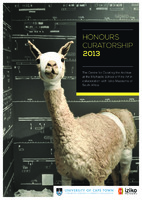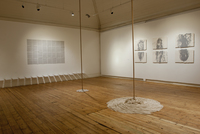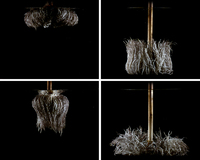Items
Site
The Medicine Chest
keywords is exactly
cleaning
-

A translated rock
In 2012, while exploring possible curatorial opportunities for the Honours in Curatorship students, I met with Sven Ouzman, a curator in the archeology department at Iziko, to chat about possible opportunities pertaining to this collection. I took him the newly designed course prospectus, to peruse. He flipped through it and when he got to the second last page, he paused. ‘Do you know the story behind this image’, he asked. I told him I didn’t… He pointed at the rock in the bottom right hand corner and started his story. Apparently this rock was not part of the SAN Rock art collection at all. It belonged to an archeologist who worked at the museum for close to twenty years. When she first started at the museum, her partner, now husband (and also an archeologist) also worked there with her. They were still in the beginning of their relationship and he was, to use older terminology, still courting her. One of the gifts he gave her during this period, was a rock he drew that mimicked San rock paintings, probably ones that would pertain to love in some way or other. She kept this in her office and, when she finally left the museum and had to empty her belongings, forgot to pack the rock as well. Exit archeologist, enter the lady who tidied the office before the new occupant moved in. On finding the rock she assumed it was part of the collection and returned it to the store room where it was assimilated into the bona fide rock art collection. I don’t know in how many exhibitions it subsequently appeared, but in 2010 it appeared up in Pippa Skotnes’s exhibition 'Made in translation' – an exhibition that fittingly explored ways in which translations from the landscape have been made and in so doing, placed images of rock art in the context of other forms of translation. -

The body fluid
"We shed many skin cells – at a rate per hour it comes close to a million cells per day. New cells generated at the bottom of our layered epidermis push their way to the top, where they are weathered by the environment and our daily activities. As the living body breaks down, it becomes lodged in skin pores and clothing fibres. It is inhaled, irritates, is sneezed out and blown afar; it collects in corners, and gathers on surfaces. It welcomes company, joining with soil or, lifted by weather patterns, combines with volcanic eruptions, pollution and plant pollen, or with animal bodies, minerals, and even with burnt meteorite particles – all the while becoming increasingly microscopic and indistinct. The body, now fluid and divisible, transgresses boundaries. Transformed and nomadic, it inhabits spaces without detection. That is, until a ray of sunlight reveals drifting motes hovering in the air, or a missing shoe leads to the surprise discovery of a copulating fluffle of dust bunnies under the bed. In Gutspeak, these former remnants of ourselves are gathered by the artist Dominique Edwards from the tools used to seemingly eliminate them, and turned into sheets of paper. On closer inspection, these sheets reveal a multitude of its separate components: eyelashes, cosmetics, grains of sand, diminished chewing gum wrappers and pubic hair. There is also glitter. And a surprising amount of it. Are these cosmetic ingredients? Or...perhaps meteorite particles?" -

The Tide Turns Installation
Tumble dryer lint -

The Tide Turns Installation
Paper works made from new mops, used mops and tumble dryer lint. Sculptural installation consisting of one small intermittently rotating mop and one large continuously rotating mop. -

Mop
Videos projected onto a floating screen -

Floor
Used mop paper


